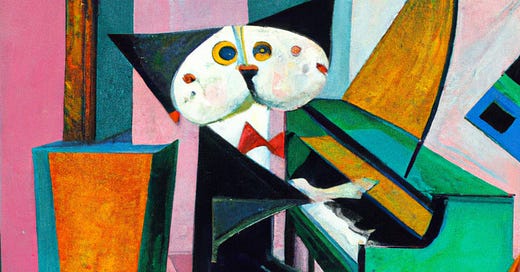It’s been hard to miss the latest AI (Artificial Intelligence) mentions in the news: educators are nervous students will use AI to write papers! At a state fair in Colorado, an award-winning painting was, in fact, generated by AI! Basically, the computers have all sectors wondering how AI could shake things up.
Comics are not immune, and though we may want to bury our head in a familiar floppy (single issue comic - just like your grandpa used to read!), we thought it might be worthwhile to explore some of the latest impacts of AI in comics.
Read on for our roundup:
The Graphical Storytelling Project is attempting to create comics from the text of health-related stories. The project’s website discusses why the project began and its goals:
“Younger audiences are interested in stories with great public service value, such as issues around mental health, but might be less interested in the text-heavy format many of these stories take online. Can we build a new format for telling these stories in a visually appealing way, without significantly increasing journalists' workload?”
The project is still in the prototype phase, and honestly, the images it creates and the relationship between the text and image are rather dull.
In a recent article for the New York Times, Kevin Roose discussed his fun with DALLE-2 (the name is a portmanteau of Pixar’s WALL-E robot and the artist Salvador Dalí), an image-generating AI. Roose notes that
“What’s impressive about DALL-E 2 isn’t just the art it generates. It’s how it generates art. These aren’t composites made out of existing internet images — they’re wholly new creations made through a complex A.I. process known as “diffusion,” which starts with a random series of pixels and refines it repeatedly until it matches a given text description.”
We think that DALL-E 2 is pretty good at generating art, although it can be a bit uncanny.
Steve Coulson, a director at an ad agency (Campfire), used the AI program Midjourney to create Summer Island, a comic-photo essay mashup. Coulson notes that he has always been a comic fan, wanted to create his own, but couldn't draw. So, “based on written prompts [he] supplied” Midjourney created the art to accompany his dark tale set in a small 1970s-era community.
Of his creation, Coulson says, “this wasn't so much an attempt to create a comic as it was to forge one. Could I use artificial intelligence to make something that looks and reads like a traditional comic? And the answer, I think, is ‘pretty close.’” You can read it for free- and let us know, do you think he hit the comic mark?
Other notable works include what is perhaps the first AI comic book, Abolition of Man written by Carson Grubaugh. And, the folks over at Rubick’s Code have tried different AI art programs to illustrate the same Allen Moore script of The Killing Joke. Here’s a sample of one of the panels they came up with; note the varying illustration styles.

Elsewhere on Substack, illustrator Roman Muradov weighs in on DALL-E, saying that the automation he would prefer to see engineers focus on are:
You draw a bit of a pattern and AI fills the grid with little variations that can be adjusted and controlled.
You make a font, drawing each glyph 5-6 times for reference, and AI “inks” each letter as it’s typed, so your text looks hand-lettered.
You color one panel of the comic and AI does the rest of them, taking into account how you fill the shapes, and then there are sliders for accuracy, variation and so forth.
You draw the keyframes and several main inbetweens and AI fills in a set and spaced number of inbetweens, accounting for line variations, wobble and so forth—would be best for background details, and things that don’t require close human scrutiny.
What do you think—will AI take over comics?





